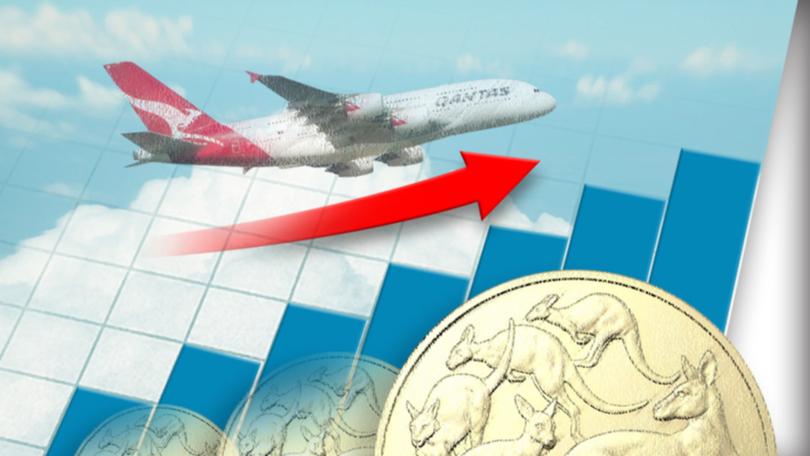Gemma Acton: What the improving Aussie dollar could mean for travelling abroad in 2024

There’s a lot to think about when you’re heading overseas.
Where to stay, train tickets, plane seats, what to pack and which reservations to make. Starting early, I was quietly confident I’d thought of everything and had kept our plans within a fairly tight budget. Shortly after touching down in Zurich just after Christmas, I realised the one (very major) thing I hadn’t thought of. The exchange rate.
Last time I stayed in Switzerland in early 2011, the Aussie dollar was on par. A bill for 100 Swiss Francs cost me $AUD100. Today, to my horror, 100 Swiss Francs costs $AUD175.
Sign up to The Nightly's newsletters.
Get the first look at the digital newspaper, curated daily stories and breaking headlines delivered to your inbox.
By continuing you agree to our Terms and Privacy Policy.In other words, everything instantly costs 75 per cent more this time than during my last stay — before you even factor in inflation.
It’s not just an issue for Australians travelling to Switzerland. New Zealand was the country most visited by Australians last year. In early 2011, one Aussie dollar would buy you 1.32 New Zealand dollars, today just 1.08.
The US is Australians’ third-most visited destination. Back in early 2011, the US dollar and our dollar were worth exactly the same. Today one Aussie dollar will get you just 66 US cents.
The Aussie dollar tends to do better when people are optimistic about the health of the global economy. With inflation running riot in many nations, economies still normalising post-COVID and fears that many countries are on the brink of a recession, the US dollar has strengthened at the expense of our local currency in recent years.
Now, with inflation subsiding over the past year and fears of a global economic meltdown retreating, things are looking up for the Aussie dollar.
Fortunately for any Australians dreaming of California or Connecticut, some economists expect things to start swinging our way before too long. The team at National Australia Bank predicts that by the end of this year, one Aussie dollar will buy 73 US cents, and 78 cents by Christmas 2025.
In the meantime, you can save yourself substantial money by being smart about how you pay when you’re overseas. The handiest tip is to always pay in the local currency when offered the choice onscreen when you tap your card. If you choose to pay in Australian dollars, you’re letting the merchant choose the exchange rate which is inevitably worse than what you’ll get otherwise.
You’ll also get whacked with additional fees for the merchant carrying out that unnecessary work for you. As a financial journalist who is constantly reading terms and conditions of financial products so you don’t have to, I have a few bank accounts and credit cards, each selected for a specific reason.
While my American Express credit card is great for collecting insurance, perks and points — I had saved up enough points to get my return flight for free — I wouldn’t dream of using it overseas as every transaction attracts a 3 per cent fee.
My standard debit cards from two of the four major banks charge at least as much in international transaction fees. It’s important to note that you’ll also be charged this fee if you’re making a purchase online from Australia if the seller processes their transactions overseas. It can be really tricky to tell if they do as even websites ending in .com.au and showing prices in Australian dollars may be doing this.
I also have current and savings accounts with Up bank. Because it charges no international transaction fees, international ATM fees for cash withdrawals or mark-ups on the exchange rate, it’s my go-to for travel now. It also sends you a notification immediately showing what the purchase cost you in both the local currency and Australian dollars. That’s not always what you want to see when you’ve just finished a nice meal and you get walloped by that news, but at least there’s no nasty surprises waiting when you get back home from your holiday and check your bank balance.
I have a Wise card which has the beauty of offering you multiple bank accounts in different currencies all within the one app and is clever enough to automatically pull money from the correct account depending on which country you’re in. It also clearly lays out its fees and exchange rates before you do a transaction. It does however, charge cash withdrawal fees above a certain amount.
None of these providers have asked me to review their cards and this is by no means an exhaustive list of what’s out there, just what works for me right now after much experimentation.
Rather than recommend specific products, I’m writing this article to provide a reminder of the major red flags to look into and avoid before you travel. Namely, international transaction fees, international ATM fees, exchange rate mark-ups and currency conversion fees.
If I’d been a little more organised, I might have chosen to go to next-door Austria instead of Switzerland where I’d be paying in Euros which are a little more expensive now than in 2011 but where the currency appreciation has been far more subdued.
It’s been a useful, if not a very expensive lesson in holiday planning. I’ll certainly be watching the foreign exchange markets closely before locking in our next major getaway.
Gemma Acton is Seven Network finance editor.

